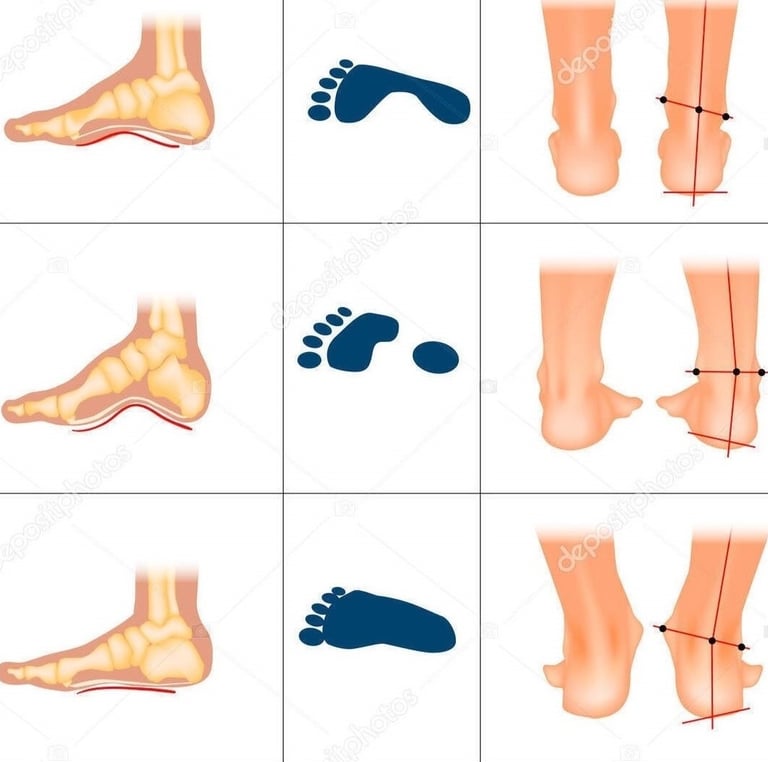Flat feet are a condition in which the longitudinal arch of the foot, typically found between the heel and the ball of the foot, flattens or diminishes.
This condition can be caused by various factors and may develop over time.
Genetics - If one of your parents or close relatives has flat feet, there is an increased chance that you may develop the same condition.
Weak Foot Muscles - Weak foot muscles cannot properly support the longitudinal arch of the foot.
Excess Weight - Excessive weight can increase the load on the feet and contribute to the flattening of the longitudinal arch.
Improper Footwear - Wearing shoes that lack sufficient arch support or cushioning can contribute to the development of flat feet.
Trauma or Injuries - Trauma or injuries such as bone fractures or severe impacts can lead to foot deformities, including flat feet.
Age - With aging, the connective tissue in the body, including tendons and ligaments in the feet, may lose elasticity, contributing to a reduction in the longitudinal arch.
Hormonal Changes - Hormonal changes, such as those during pregnancy, can affect muscle tone and connective tissue, contributing to the flattening of the foot arch.


Flat feet can develop gradually over time and are often the result of a combination of these factors. Some children and individuals may experience symptoms such as foot, joint, or back pain, difficulty walking, or discomfort.
Through our extensive experience, the best results are achieved when exercises for flat feet are initiated in early childhood during the growth and development phase. The earlier exercises begin, the greater the likelihood of achieving better results. Ideally, exercises should commence when flat foot issues are noticed, or when a doctor recommends consultation with a physiotherapist for this problem. Contact us for a detailed exercise plan for flat feet.
However, it's important to note that even after flat feet become noticeable, exercises can be used as a preventive measure in young children to strengthen foot muscles and support proper development. Regular physical activity and balance exercises can be beneficial for this purpose.
In any case, consultation with a doctor or physiotherapist is crucial to determine the appropriate therapy and exercises tailored to the child's needs. Parents and guardians should be aware of the importance of regular monitoring and support throughout the developmental and strengthening process for children's feet.
Flat feet can affect the positioning of the hips in the body. When you have flat feet, the natural longitudinal arch of the foot is lost, which can lead to changes in body posture and walking biomechanics. This can further impact the position and function of the hips in several ways:
Change in Body Posture - Individuals with flat feet often tend to compensate for the lack of foot arch by leaning forward or backward to maintain balance. This can affect the position of the hips and spine, potentially leading to other deformities such as scoliosis.
Additional Stress on Hips - Improper weight distribution on the feet can increase pressure on the hips, potentially causing pain and discomfort in the hip area.
Altered Walking Pattern - Flat feet can cause an irregular walking pattern, which can affect how you use your hips while walking. This may impact the muscles and joints in that area.
Balance Issues - Changes in biomechanics due to flat feet can lead to balance problems, affecting hip stability.
Long-Term Effects - If flat feet are left untreated or improperly treated, they can have long-term effects on the development of hip problems, such as bursitis, trochanteric syndrome, or osteoarthritis.
